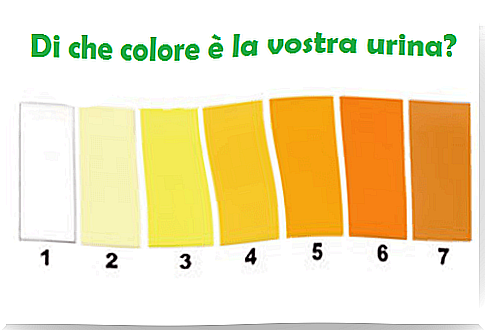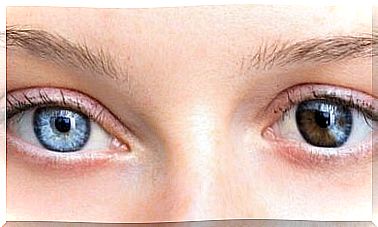Alterations Of Urine: What Significance For Health?

The color of urine has been a very useful tool for diagnosing various diseases since ancient times, as different changes in color, texture and smell can indicate something wrong with the body.
Every day through the pee we expel hundreds of waste that come from everything we eat and drink. However, urine can also serve as a litmus test for some health problems; when you are not feeling well, for example, the hue can change and the smell can become strong, making it unpleasant.
Let’s look at eight changes in urine and what they can indicate about health.
Main changes in urine, what are they due to?
Light yellow urine
The urine of a healthy person is almost transparent bright yellow. This color is due to a bile pigment called urobilin. An almost transparent yellow color of the urine indicates proper hydration. If the yellow color is intense it means that we are dehydrated.
However, too light a color and frequent urge to urinate could indicate over-hydration or even water intoxication. This happens when you drink too much water. If, on the other hand, the hue is clear and you have the urge to urinate often, but you have not taken any liquid, then it could be a sign of diabetes.
Cloudy urine
Cloudy urine can indicate a phosphate content, which could be the product of kidney stones. If the appearance continues to be cloudy for a few days, this is a clear sign of a urinary tract infection, so it is advisable to see a doctor. Usually the cloudy color of the urine is accompanied by a strong odor and the frequent need to go to the toilet.
In the case of men, a cloudy or dirty color may be due to the presence of semen remaining in the urinary tract.
Greenish-blue urine
In general, it is due to what has been eaten previously, in particular if that food was blue or green. For example, asparagus can give pee a green or blue hue.
This shade could also be related to taking vitamins or medications. If none of these cases explain a urine change of this type, consult a doctor.
Orange urine
Heavy consumption of beets, carrots, or any orange food can give pee this color. Some medications or dehydration can also be a cause. If the hue is dark orange, almost brown, it could indicate a bile-related problem. Again it is best to consult a doctor.
Brown urine
Brown urine can be caused by consuming foods such as beans, broad beans and rhubarb or by taking certain medications. In extreme cases, this color can indicate a liver problem or severe dehydration.
Pink or reddish urine
Some red foods can cause changes in the color of the urine and give it a pink or reddish color. Consuming blueberries, rhubarb, or other red foods can cause urine to change color. However, this color can also be due to certain medications, traces of blood, strenuous physical activity or an infection. If the urine does not return to its usual color within 24 hours, consult a doctor.
In severe cases, the pink or reddish color of the urine can indicate kidney cancer, an enlarged prostate, or gallstones.
Foamy urine
In addition to the color, among the alterations of the urine, we can find a different consistency. For example, if the urine is too foamy, it could indicate an excess of protein in the body.
Strong smelling urine
Finally, the smell. No type of urine smells particularly pleasant, but we all know how to distinguish its normal odor from one that is too strong. An unpleasant smell can be the result of excessive consumption of coffee or asparagus. If this is not the case, the ideal is to consult a doctor.









